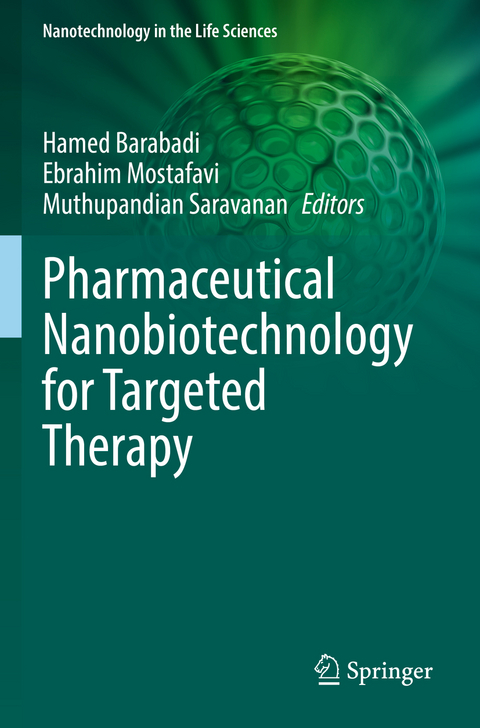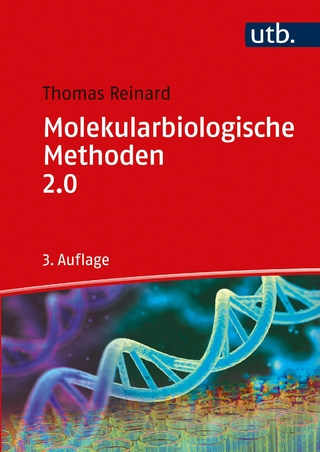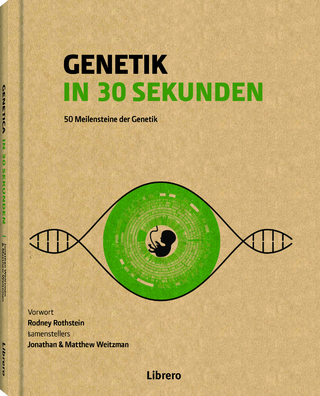
Pharmaceutical Nanobiotechnology for Targeted Therapy
Springer International Publishing (Verlag)
978-3-031-12660-4 (ISBN)
The field of nanotechnology for targeted therapy initiated more than decade ago has grown fast and interest is increasing. Given the importance of the field for targeted drug and gene delivery systems, there are a large number of laboratory investigations today researching nanobiomaterials for diagnostic and therapeutic applications. Because of the ability of scientists to load nanoparticles with any agent, interest continues to grow and technology in this arena is rapidly evolving. These emerging nanobiomaterials-based medicines can overcome the disadvantages of traditional medicines by target-oriented and site-specific delivery of precise medicines (immunotherapeutic agents, chemotherapeutic agents, diagnostic agents, and so on).
Pharmaceutical Nanobiotechnology for Targeted Therapy presents an updated overview of recent advancements in the field of pharmaceutical nanobiotechnology and nano-based drug and gene delivery systems. This comprehensive knowledge willallow researchers to discover innovative nanobiomaterials for targeted therapeutics. The chapters deal with various emerging nanobiomaterials for targeted therapeutic delivery systems and the writing is in a style that is easily disseminated and in a manner that can be readily adopted as sources for new and further studies.
This book should be useful for researchers and professionals from academia and industry working in the field of nanotechnology, nanobiotechnology, as well as in the field of pharmaceutical nanotechnology. It should also be useful to those interested in a range of disciplines from material science, chemistry, molecular biology, polymer chemistry, and many more interdisciplinary areas.lt;br>Dr. Hamed Barabadi (PharmD, PhD) works as an assistant professor at the Department of Pharmaceutical Biotechnology, School of Pharmacy, Shahid Beheshti University of Medical Sciences, Tehran, Iran. He received a PhD degree from Shahid Beheshti University of Medical Sciences, Tehran, Iran, in 2019. He graduated as a Doctor of Pharmacy (PharmD) from Mazandaran University of Medical Sciences, Sari, Iran, in 2014. He owns to his credit a number of research papers and book chapters. He has received many awards such as IET-Nanobiotechnology Premium Awards two times continuously in the years 2019 and 2020. Dr. Barabadi has been featured among the World's Top 2% scientists list, according to a Stanford University study 2020. He is the guest editor/editor for various reputed indexed journals such as Current Nanomedicine, Nanoscience and Nanotechnology-Asia, Frontiers in Pharmacology, Biocell, MDPI International Journal of Molecular Sciences, and a few other prestigious journals. His research interests lie in the area of pharmaceutical nanobiotechnology, ranging from green synthesis, characterization, and optimization of nanobiomaterials to their pharmaceutical potential evaluations, such as anticancer, antimicrobial, antioxidant, etc. Moreover, he has collaborated actively with researchers in several other disciplines of pharmaceutical sciences, particularly the nanoformulation of drugs for drug delivery systems and nanomedicine.
Dr. Ebrahim Mostafavi is currently at Stanford Cardiovascular Institute, Stanford School of Medicine. His research interests revolve around the use of cardiac iPS cells to design and develop in vitro models (organoids, 3D bioprinted constructs, vascular grafts) for cardiovascular disease modeling and drug screening, as well as CRISPR/Cas gene-editing for cardiovascular diseases. During the course of his PhD, Dr. Mostafavi received training at both Northeastern University and Harvard Medical School/Brigham & Women's Hospital on engineering and development of (nano)biomaterials and 3D scaffolds (hydrogels, 3D bioprinted constructs, and nanoporous scaffolds) to create biologically complex tissues and organs for tissue engineering, regenerative medicine, and translational applications. He also obtained both master's and bachelor's degrees in nanoscience and materials science and engineering, respectively. Dr. Mostafavi currently serves as associate editor-in-chief of the International Journal of Nanomedicine at Dove Medical Press/Taylor & Francis, an associate editor of Frontiers in Nanotechnology-Biomedical Nanotechnology, as well as academic editor of The Innovation from Cell Press publisher. He is also on the Editorial Board of several journals including Nature Scientific Reports, Springer Nature Journal of Nanostructure in Chemistry, MDPI Functional Biomaterials, MDPI Cells, BMC Biotechnology, Current Medicinal Chemistry, Springer Frontiers of Materials Science, BMC Biomedical Engineering, Frontiers in Oncology & Frontiers in Pharmacology, and a few other prestigious journals. He was selected as the editor of several books and thus far contributed to writing more than 20 book chapters.
Prof. Dr. Muthupandian Saravanan has more than 20 years of teaching and research experience and presently working as a Professor, AMR and Nanotherapeutics Lab, Department of Pharmacology, Saveetha University, SIMATS, Chennai, India. Since January 2021, he has graduated in microbiology from Madurai Kamaraj University and Doctorate with a Specialization in Medical Microbiology and Nanomedicine from Sathyabama University, India. Thereafter, He worked as a post-doctoral researcher (2011-2012), focusing his research on nanobiomaterials & their biomedical applications. Prior to his
Preface.- Chapter. 1. Outer Membrane Vesicles (OMVs) as a Platform for Vaccination and Targeted Drug Delivery.- Chapter. 2. CRISPR/Cas9 Nano-Delivery Approaches for Targeted Gene Therapy.- Chapter. 3. Lipoplexes and Polyplexes for Targeted Gene Delivery.- Chapter. 4. Aptamer-Based Targeted Drug Delivery Systems.- Chapter. 5. Artificial Exosomes as Targeted Drug Delivery Systems.- Chapter. 6. Nanoarchaeosomes in drug delivery.- Chapter. 7. Bioengineered Metallic Nanomaterials for Nanoscale Drug Delivery Systems.- Chapter. 8. Nanobody-Based Delivery Systems for Diagnosis and Therapeutic Applications.- Chapter. 9. Phytosomes Used for Herbal Drug Delivery.- Chapter. 10. Porphysomes and porphyrin-based nanomaterials for drug delivery system.- Chapter. 11. Ethosomes for Dermal and Transdermal Drug Delivery Systems.- Chapter. 12. Liposomes and Niosomes for Targeted Drugs and Gene Delivery Systems.- Chapter. 13. Dendrimers as Targeted Systems for Selective Gene and Drug delivery.- Chapter. 14. Polymersomes for Targeted Drug and Gene Delivery Systems.- Chapter. 15. Quantum-Dot-Based Nanomaterials for Diagnostic and Therapeutic applications.- Chapter. 16. Carbon-based Nanomaterials for Targeted Drug and Gene Delivery Systems.- Chapter. 17. Hybrid Multifunctional Nanomaterials for Diagnostic and Therapeutic Applications.- Chapter. 18. Polymeric Micelles for Targeted Drug Delivery Systems.- Chapter. 19. Polymeric Nanoparticles for Targeted Drug and Gene Delivery Systems.- Chapter. 20. Magnetic Nanoparticles for Diagnostic and Therapeutic Applications.
| Erscheinungsdatum | 20.10.2023 |
|---|---|
| Reihe/Serie | Nanotechnology in the Life Sciences |
| Zusatzinfo | XIV, 639 p. 127 illus., 102 illus. in color. |
| Verlagsort | Cham |
| Sprache | englisch |
| Maße | 155 x 235 mm |
| Gewicht | 991 g |
| Themenwelt | Naturwissenschaften ► Biologie ► Genetik / Molekularbiologie |
| Technik ► Umwelttechnik / Biotechnologie | |
| Schlagworte | nanomaterials • nanomedicine • nanotechnology • Nanotheranostics • Pharmaceutical nanotechnology |
| ISBN-10 | 3-031-12660-2 / 3031126602 |
| ISBN-13 | 978-3-031-12660-4 / 9783031126604 |
| Zustand | Neuware |
| Haben Sie eine Frage zum Produkt? |
aus dem Bereich


